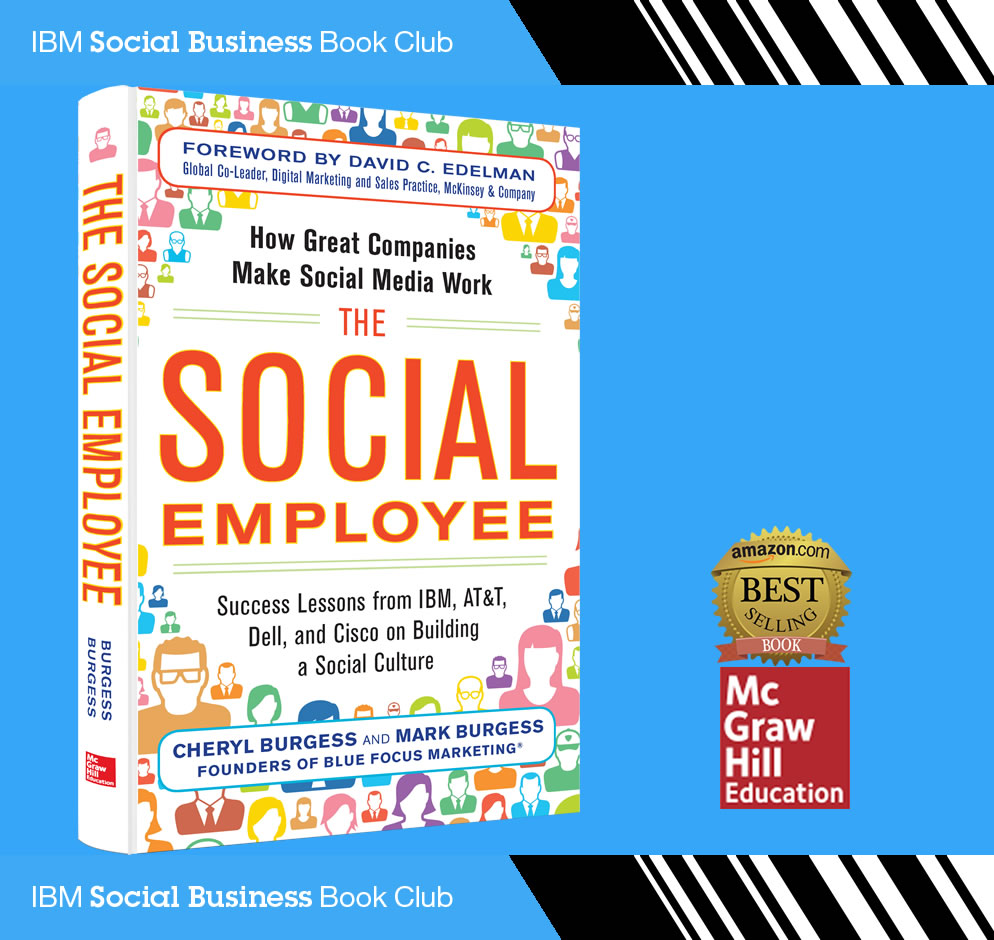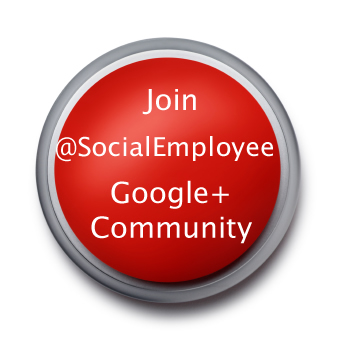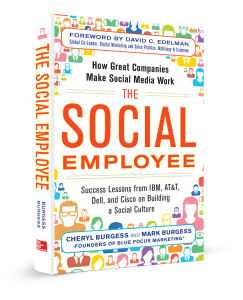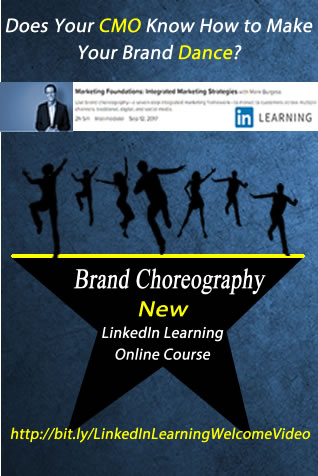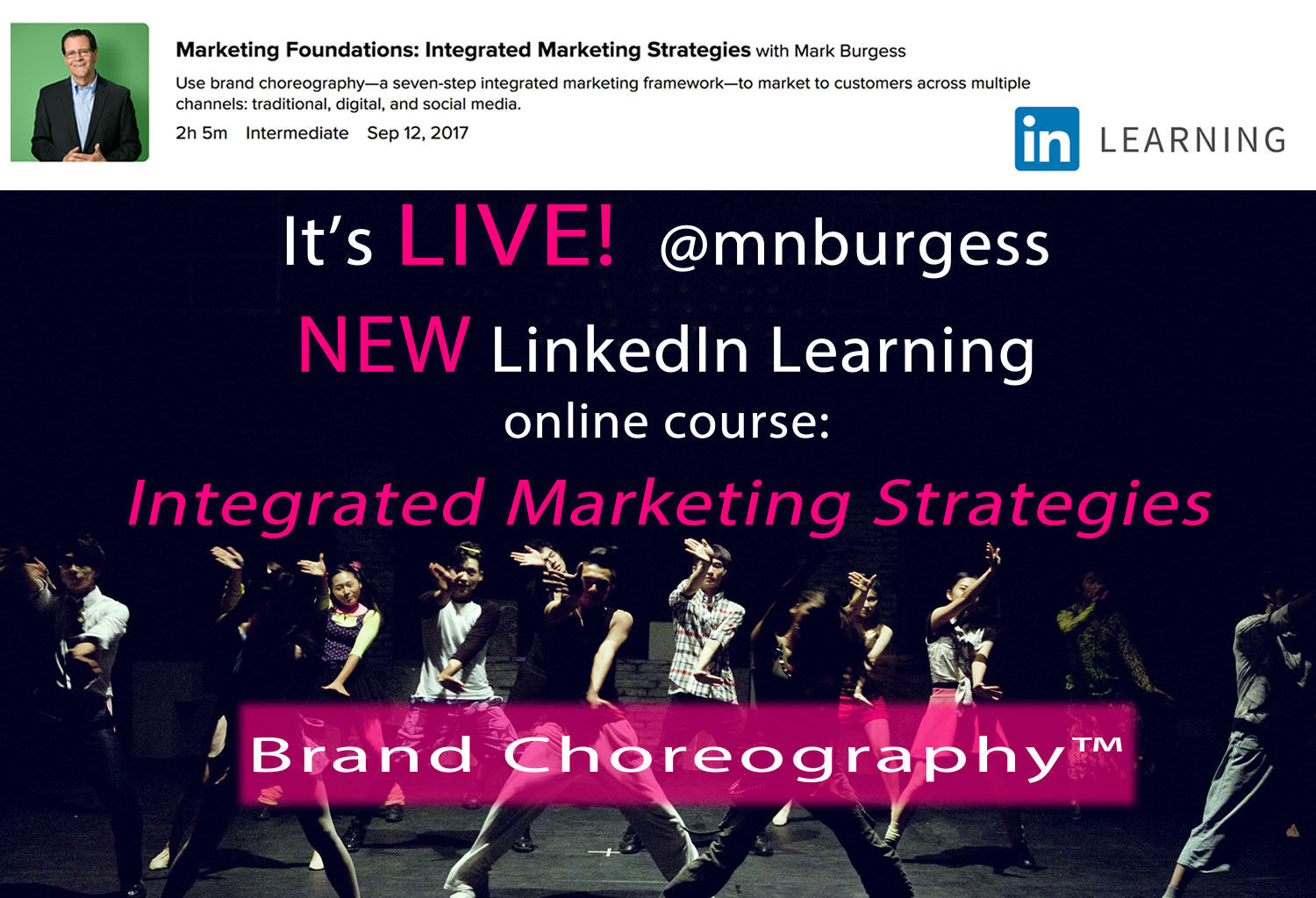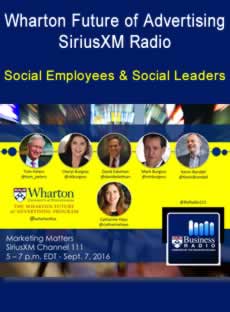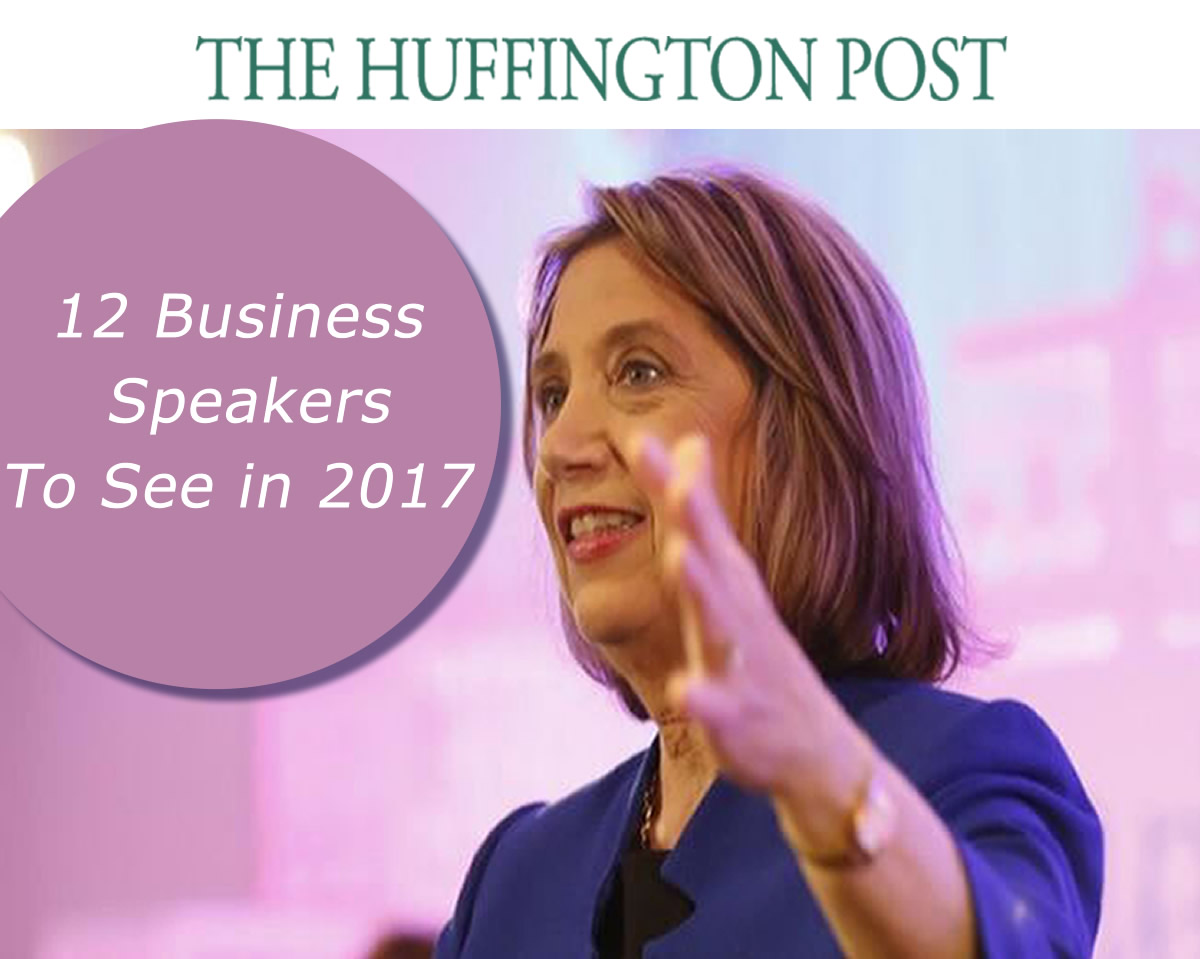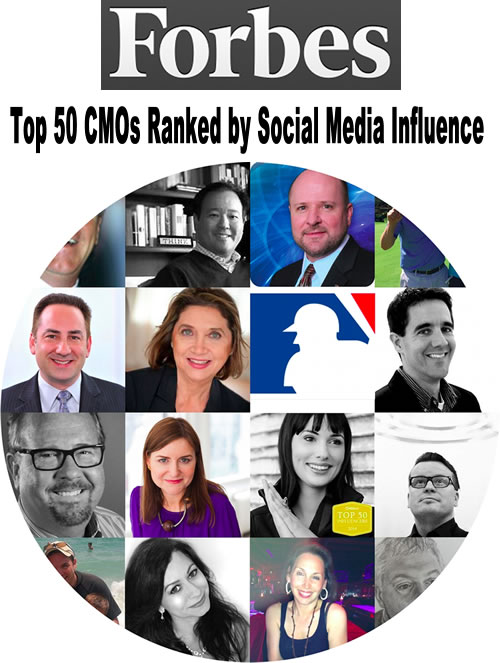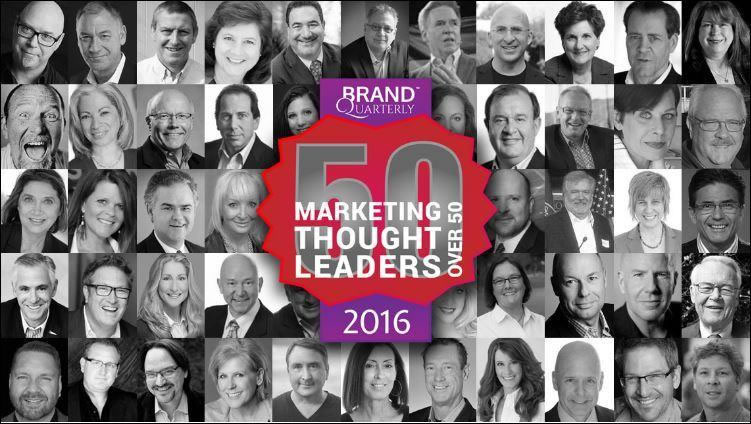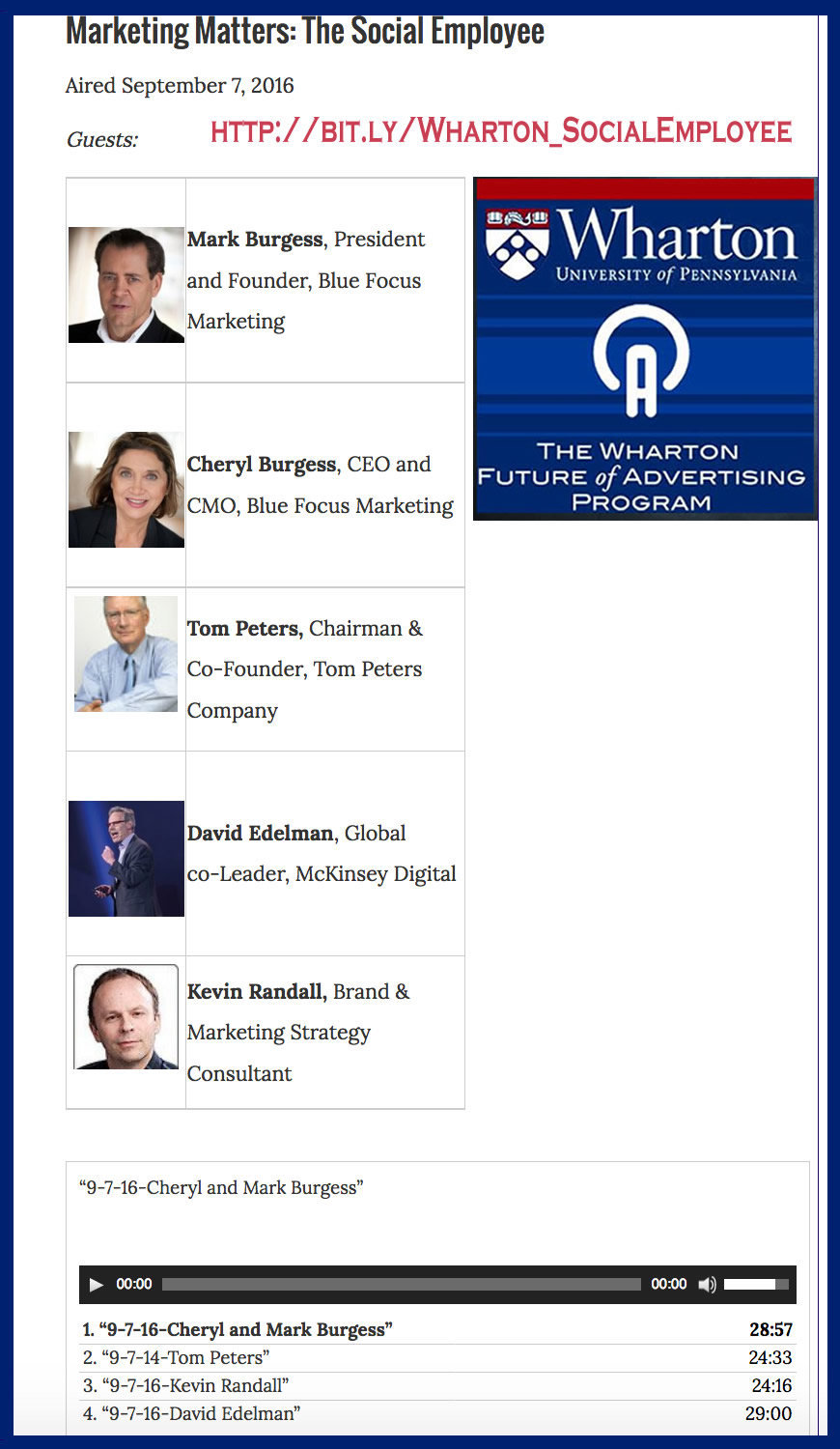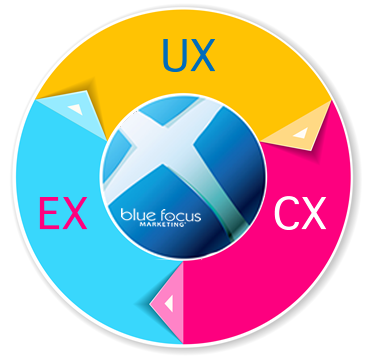 UX (User Experience) CX (Customer Experience)
UX (User Experience) CX (Customer Experience)
EX (Employee Experience)
Last month, I had the pleasure of joining such social business luminaries as Dion Hinchcliffe (@dhinchcliffe), Kristen Ritter (@KristenRitter), Laura Grover, David C. Thompson, Anders Gronstedt (@AndersGronstedt), and Kelly Orr at the Conference Board event “Creating, Managing and Evaluating the Digital Workplace” (see my original post here). As with most Conference Board (@Conferenceboard) events, a lot of ground was covered in a relatively short amount of time. Anyone who had the privilege to attend certainly came away from it with a few new ideas to try out—as well as the chance to rub elbows with representatives from top brands like IBM, Starwood Hotels and Resorts, Airbus Group, ADP, The Hershey Company, Goldman Sachs & Co., and General Mills.
My presentation focused on what we at Blue Focus Marketing (@BlueFocus) are calling Employee Experience (EX). From the abstract:
Companies the world over are focused on the pursuit of User Design (UX) and the importance of the Customer Experience (CX). Many companies are still learning that traditional command-and-control models may not be the best fit for today’s business. And, while user design and customer experience are critical to a firm’s success, leading companies are realizing powerful business results by focusing internally on creating the new social Employee Experience (EX). By creating social employees, companies can create successful social businesses.
The idea of the EX was essential to our book The Social Employee (McGraw-Hill, 2013), and it can be seen as a natural evolution of the concepts explored first in UX and later CX. As companies like IBM, Adobe, AT&T, Dell, and Domo have come to discover, while being attentive to customer needs and experiences is important, these outcomes are largely dictated by the employee’s experience within the organization. After all, if our employees aren’t excited about what they do, how can we expect our customers to be?
]
The employee experience is the integration of a person’s professional identity with their personal brand, forming the core traits of the social employee. Social technology has changed the way the world’s workers communicate, knocking down boundaries between employee, manager, and customer. We are in closer contact with each other than ever before, and it’s changed how we relate to each other whether as brands, employees, or everyday people.
Social employees want to connect, to join conversations where the best idea wins out—regardless of whose idea it was. They want to know that their contributions matter, that they can go home each day able to take pride in the work they’ve done. They want to be engaged in what they do.
And to be clear, engagement runs much deeper than happiness. Columnist Liz Ryan, in a recent article for Forbes, did an excellent job of distinguishing the difference between happiness and engagement—and why the concept of happiness in and of itself is a false ideal for organizations to chase:
Rather than focusing on new programs to make employees happy, we should be taking away the obstacles that keep people at work disempowered and disconnected from their mission, and from yours.
Enduring happiness, real employee satisfaction, is achieved not by a simple happiness program, but rather through an organization-wide commitment to creating an engaging, supportive work environment. By focusing on deeper engagement and empowerment, by giving employees a greater stake in both their careers and business outcomes, we create a win-win for employee and company. After all, engaged workers are happier workers—and they are also more productive.
Right now, we are seeing brands champion the ideas put forth in The Social Employee to reorganize their workplaces around the employee experience. Recently, Martyn Etherington (@Etherington_CMO) of Mitel, a $1.2 billion telecom company based in Canada, discussed the impact the book has had in designing an employees-first culture within their organization. As Etherington would acknowledge, such a culture change doesn’t happen overnight, but the early results have been quite promising.
Will your organization be next to embrace the Employee Experience and open its doors to the @SocialEmployee Revolution?
Below are recent endorsements for The Social Employee (McGraw-Hill, August 2013) by Tom Peters and David Aaker on their social networks, but if you want to see more of their endorsements click here.

In The Social Employee, we go behind the scenes with several leading brands—such as IBM, AT&T, Dell, Adobe, Southwest Airlines, Cisco, Acxiom, and Domo—pulling the lid off the inspiring social business success stories that have propelled these companies into the 21st century. These cutting-edge brands have all come to the same realization: the path to social business lies through empowering the social employee.
See what others are saying about The Social Employee and order your copy today!
Please check out @SocialEmployee media buzz! 
“Great brands have always started on the inside, but why are companies taking so long to leverage the great opportunities offered by internal social media? . . . The Social Employee lifts the lid on this potential and provides guidance for businesses everywhere.” —JEZ FRAMPTON, Global Chairman and CEO, Interbrand
 The Social Employee offers an unparalleled behind-the-scenes look at the social business success stories of some of the biggest brand names in the business world, including IBM, AT&T, Dell, Adobe, Southwest Airlines, Cisco, Acxiom, and Domo. These cutting-edge brands have all come to the same realization: the path to social business lies through empowering the social employee.
The Social Employee offers an unparalleled behind-the-scenes look at the social business success stories of some of the biggest brand names in the business world, including IBM, AT&T, Dell, Adobe, Southwest Airlines, Cisco, Acxiom, and Domo. These cutting-edge brands have all come to the same realization: the path to social business lies through empowering the social employee.
The brands that leverage their employee base in order to engage customers and prospects through social media are the ones destined to win the marketing wars. This book not only details the astronomical rise of the social employee, but also outlines the innovative methods that leading companies have employed to foster cultures of enthusiastic and engaged workers.
FOR EWORD by David C. Edelman, Global Co-Leader, Digital Marketing & Sales Practice, McKinsey & Company
EWORD by David C. Edelman, Global Co-Leader, Digital Marketing & Sales Practice, McKinsey & Company
AFTERWORD by Kevin Randall, Vice President of Brand Strategy & Research at Movéo Integrated Branding, and journalist for The New York Times, The Economist and Vanity Fair.
Download ~> Free Chapter 3 – “Brands Under Pressure”
